Some people aver that dance and politics don’t mix well. Others claim that dancing is inevitably political in some sense—yielding or countering dominant views about gender, power, race, or identity that may be inscribed on the body. Occasionally, a choreographer wants to speak out, to raise awareness and awaken consciences through dance. In his or her own way.
When Jane Comfort dealt with the transporting of suspected terrorists off American soil for possible torture in An American Rendition (2008), she opted for a multi-layered and savagely theatrical presentation. Rachid Ouramdane’s Ordinary Witnesses (seen October 14 and 15 as a co-presentation by New York Live Arts and FIAF’s Crossing the Line Festival,) approaches the subject of torture very differently. The world he presents is a gray one, through which survivors wander, forever numbed in some way by what they endured. Ouramdane is no stranger to that world. Before his parents left Algeria for France during the Algerian struggle for independence, those members of their generation who survived were marked by the terrible violence of their experiences. Since the founding of his France-based company, L’A./Rachid Ouramdane, the choreographer has functioned like a maker of film documentaries, gathering and weaving together testimonies and potent images. His 2005 solo, Les Morts Pudiques, focused on the deaths of young people, especially suicides, gathered from the Internet.
What light there is for Ordinary Witnessesat NYLA’s Bessie Schönberg Theater is often dim, but it can also turn blindingly white. Designer Yves Godin has placed a slanting wall of globular lights—60 in all— at one side of the area. Sometimes these emit an amber glow; sometimes they glare; sometimes they toggle between bright and dim in various patterned combinations. Jean-Baptiste Julien’s score exists between the extremes of a barely audible hum and catastrophic tumult. For a long time, there are no people at all onstage. We listen to Ouramdane’s halting voice, trying in French to explain matters that “go beyond what words can say,” and the white sentences of the English translation often have to arrest their flow across the screen at the back while pauses dam up his thoughts.
As the five dancers, barely visible at first, walk quietly this way and that, other recorded voices speak of the aftermath of torture, of the hatred of one group for another. The voices never describe the torture itself; one woman simply says that, after her release, she wanted to commit suicide by falling out a window, but was unable to walk to the window to do so. At the very end, on a small downstage screen, we see in close-up the face of one survivor. She speaks articulately and without rancor, smiles, can laugh at times, but her face is the face of someone who has suffered, and her words reveal how prison and torture altered her completely.
What Ouramdane shows us in his choreography are the wracking effects of that kind of experience on mind and body. The performers touch only occasionally. Mille Lundt pulls Jean-Claude Nelson’s arm behind his head into what must be a painful position. There is a passage in which some performers lay others out on the floor. But mostly, these people are isolated—watching one another from a distance or scrutinizing others’ actions at closer range, like prison guards.
Lundt arches her body so extravagantly that she looks deformed, then walks in that position. Lora Juodkaite spins and spins and spins, travelling in a tightening circle as she does so. She’s no erect, serene dervish; her head juts slightly forward or hangs back, and her body descends from it in an s-curve. Her hair flies out. You imagine her dissolving. Many time, Georgina Vila Bruch balances in increasingly distorted handstands—collapsing, trying again, collapsing. . . .When the performers (the fifth is Jean-Baptiste André) tumble or slip or writhe to the ground, as they often do, they end up in grotesquely askew positions—their limbs tangled, bent beneath them, or cranked at strange angles. The spoken texts do not define the dancers’ actions; rather the living bodies illustrate what cannot quite be said.
Nora Chipaumire and Jawole Willa Jo Zollar intended in their collaborative Visible to show—through music, and dance, and the spoken word—related ideas about American ideals of freedom and equality, the struggle of those uprooted from home and family, the individual versus the community, and more. That’s a lot to deal with, and not all of it came through clearly, judging from the detailed program explanations. The Waterworks premiere, produced by Urban Bush Women and presented by Harlem Stage in the marvelous brick space of the Gatehouse, was an organized mélange of images related to power, rage, pride, defiance, death, national differences, religious practices, friendship, and support—all these conveyed by dancing and music so full-bodied and hot-spirited that I could imagine steam from it rising to the vaulted ceiling.
Zollar was born in Kansas City, Missouri, and Chipaumire in Zimbabwe (they don’t perform in Visible), and the cast is a mixed one. Souleymane Badolo hails from Burkina Faso, Catherine Dénécy from Guadeloupe, Margeurite Hemmings from Jamaica, Judith Jacobs from Holland, John O. Perpener III from the U.S., and Kota Yamazaki (who also designed the costumes) from Japan. Their performing is abetted by Amanda K. Ringger’s highly effective lighting and by the terrific playing of Bashir Shakur and David L. Alston—first on side-by-side drum sets, later on inverted plastic buckets that the men punish with virtuosic stick work. Taped material, including Miles Davis’s “So What,” supplements the live music.
You can envision Hemmings on her first entrance (black hat, dark glasses, white cane) as a death figure—the transplanted Eleggua of Yoruba myth masquerading as a rickety blind man. Yamazaki too has a cane. And, perhaps feeling their influence, Perpener, seated on a chair, pushes the handle of his cane against his own neck, as if unseen forces were throttling him. Perpener, a noted dance scholar, isn’t as nimble as the younger dancers, but in addition to reminiscing about a childhood transplanted to Boulder, Colorado, he’s out there when unity is called for, joining the other two men in their moves.
Different languages ring out in the Gatehouse, and its long, narrow space is awash with motion. Maybe it’s three men thumping their canes on the floor while the women whip themselves into dancing—swinging their hips, lunging, springing off the floor with their legs bundled up under them. Maybe it’s the three women, marking time with small steps in place, while Yamazaki and Badolo confront each other under a blaze of light. At first, the two men compete like drummers trading fours; suddenly they’re wrestling (contentious rivals or a man taking on a god?). Maybe it’s the women half-shucking items of clothing and carrying on with the garment hanging off them. Badolo and Dénécy banter teasingly, calling out “krik” or “krak,” each insisting on one or the other. All the performers toss little stones like dice, whooping when a favorable prediction can be decoded or a prayer answered. Jacobs repeatedly hurls herself to the floor, gasping out infuriated words about an America that doesn’t live up to its promises; “we the people” is a pipedream, and getting the necessary visa almost impossible When she finishes with a cry of “Mama!” the others softly call out the word in their own mother tongues.
There are processions and parades— traveling roads, mourning loss. Yamazaki brings in white shoes of all sizes—enough for several families—and lays them on the floor as a symbol of voyaging. Ironically, for all the implied lack of community, the dancers and musicians themselves form a profoundly supportive little society. And their shared wealth is the dancing —full-bodied, robust, powerful, voluptuous—as grounded as African forms and often as rhythmically complex.
At one point Dénécy launches herself into a mesmerizing solo that seems to come from deep inside her. I can’t convey how rich it was the night I saw it—both in power and in the many nuances and dynamic shifts that modulated the flow of movement. What Dénécy achieved—dredged up— was as complex as thought, yet swept on a tide of feeling. You could perhaps be transformed by such a dance—whether as the performer or the spectator with imminent tears pricking the rims of her eyelids.
If all the ambitious, complicated ideas mentioned in Chipaumire’s scenario don’t emerge in Visible in all their specificity, audiences can probably deal with that. Interpretation survives as a grab bag; what you get is what you get, and if the prizes in it are mostly bright, shiny ones, that’s okay. Once people went to the Gatehouse because it was a pumping station for water coming from the Croton Aqueduct to New York City. Now you go there to drink. . .politics maybe, artistry for sure.

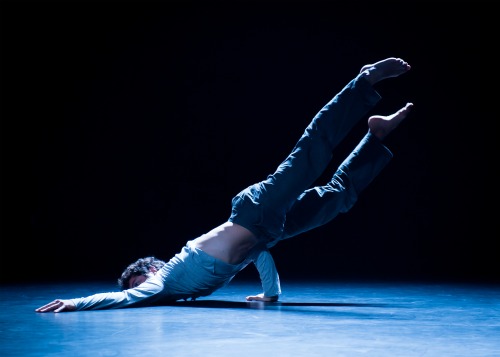
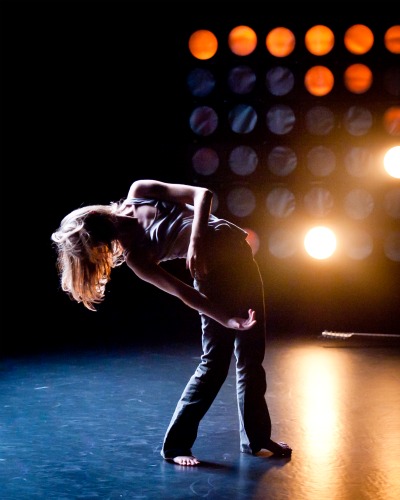
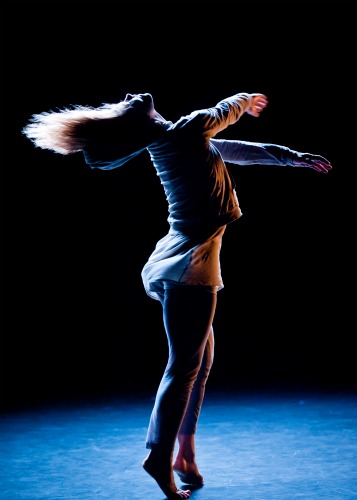
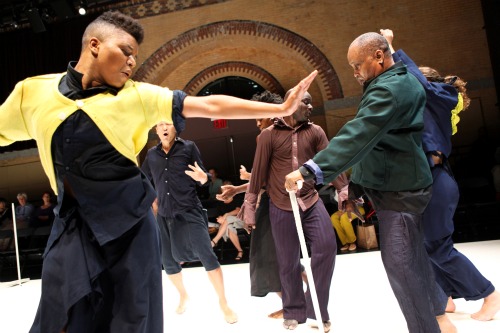
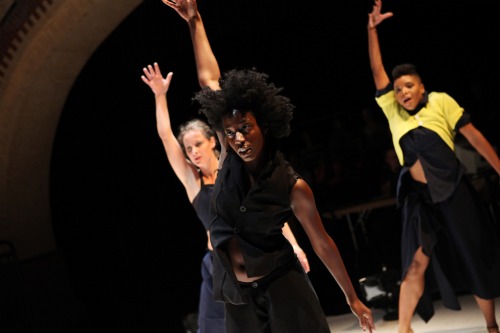
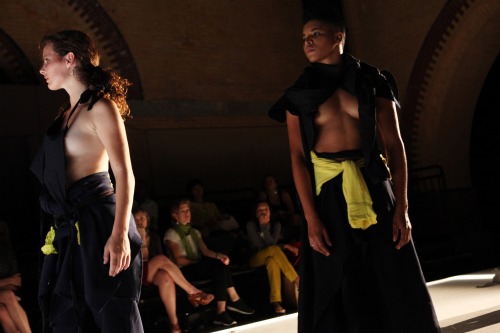
wish I’d seen this.
jg
Thanks for such vivid writing.
This was an evening that must have made the receptors vibrate, or so you’ve evoked.
Why does your description of Yoruban Eleggua remind me of Holder, with de Lavallade and Milié, dancing Baron Samedi at Theatre Under the Stars in Central Park in 1957?
John P. III was a lovely dancer in his youth (Hartford Ballet among others) and of course is the brilliant author of “African-American Concert Dance.” Since leaving Florida, where is he now?
What beautiful, rich descriptions! I wish I could have seen the performance based on your review. As always, I am inspired by your writing!
Would have been wonderful to see this:)